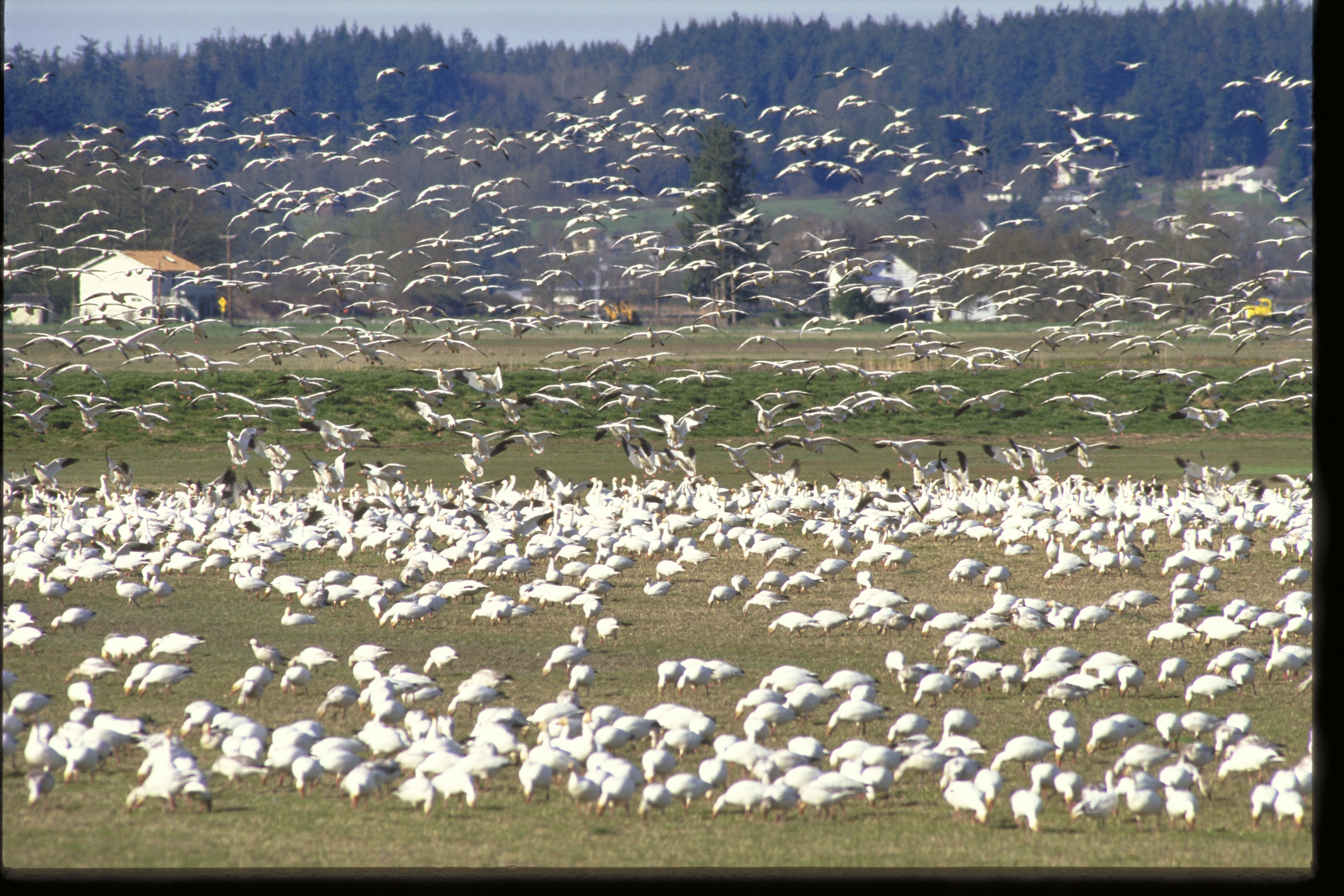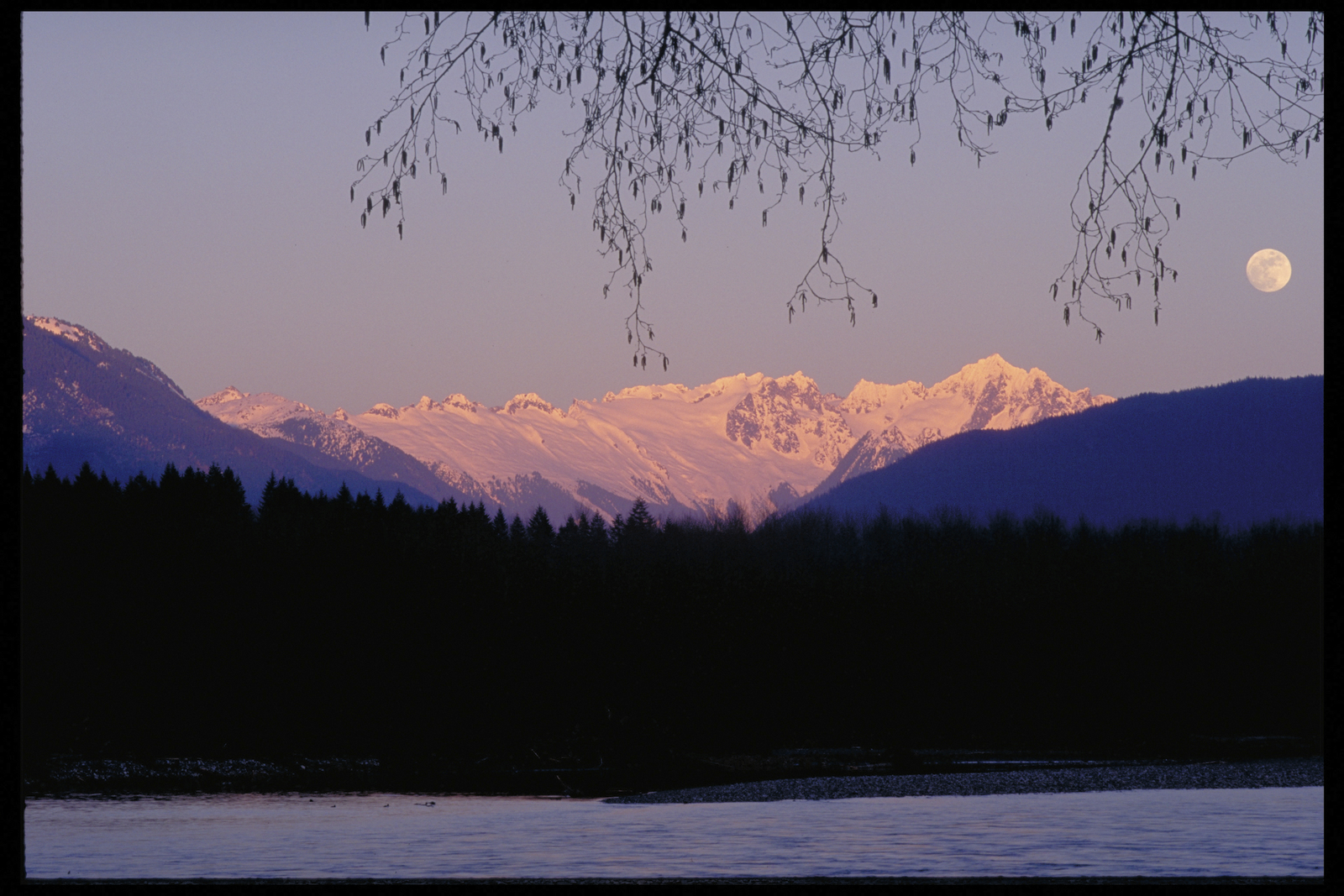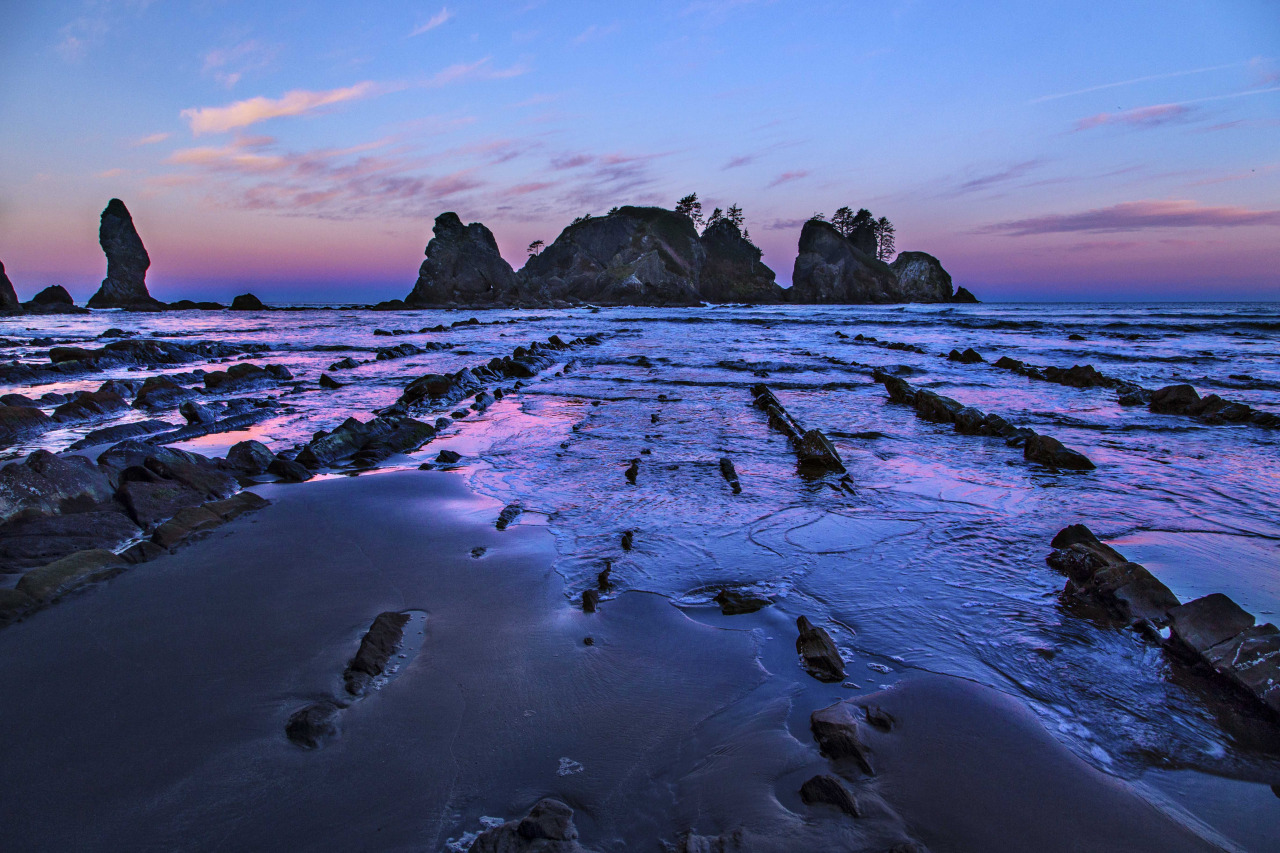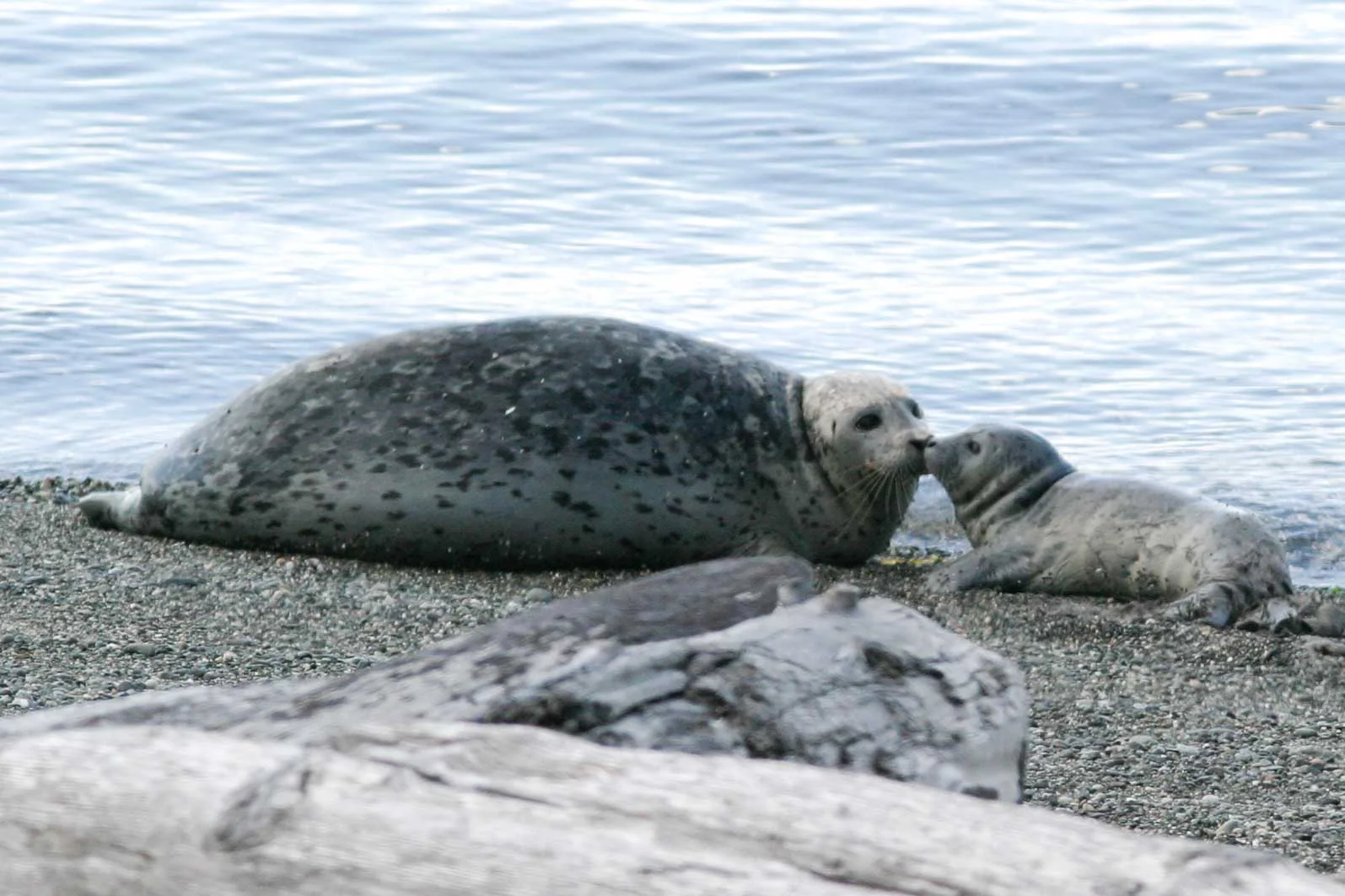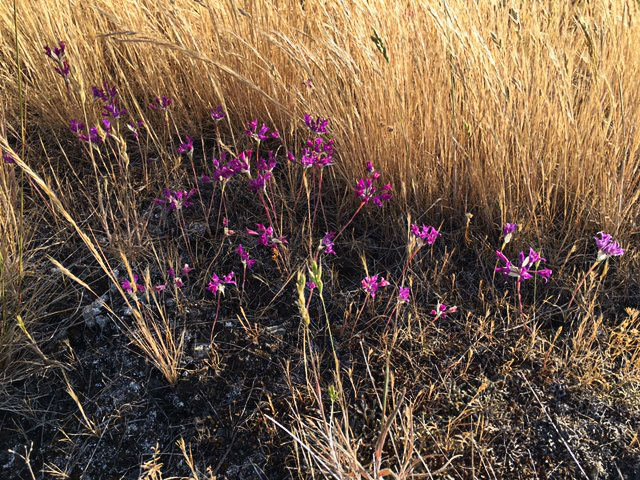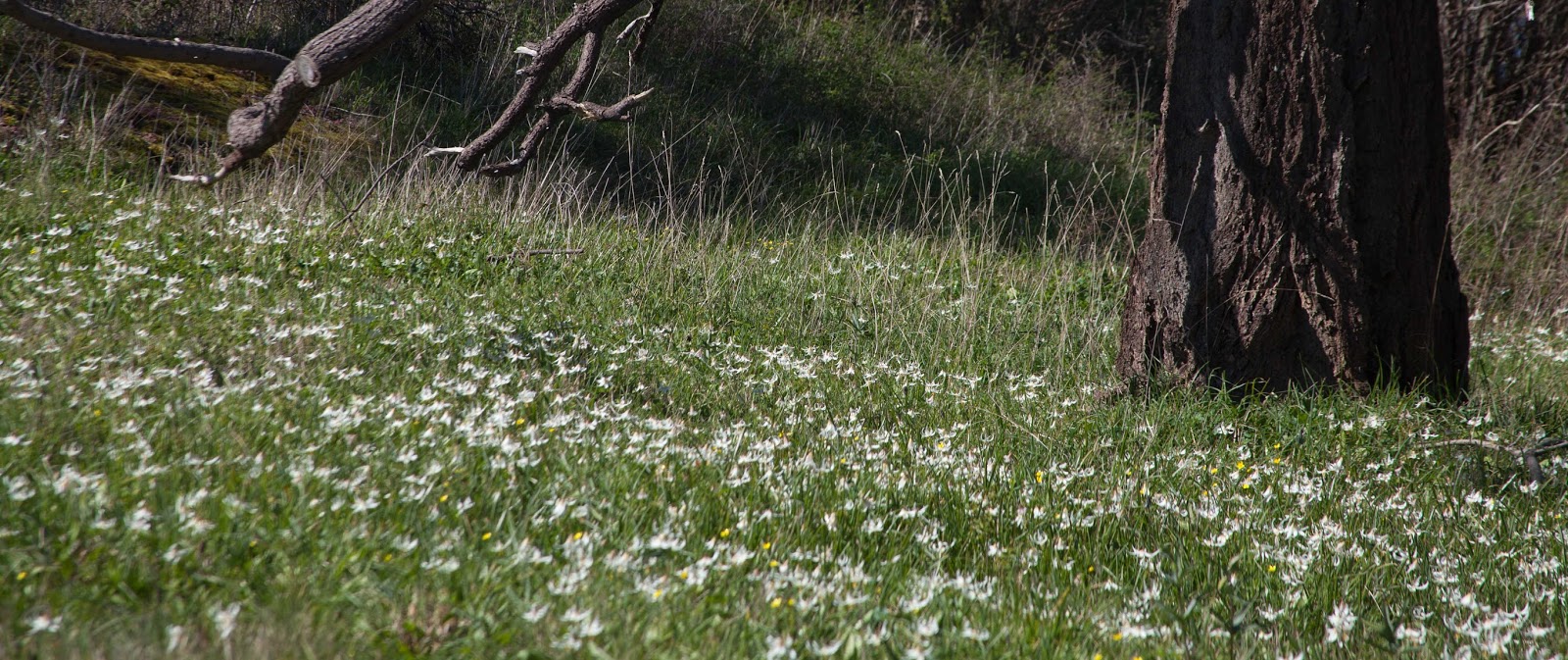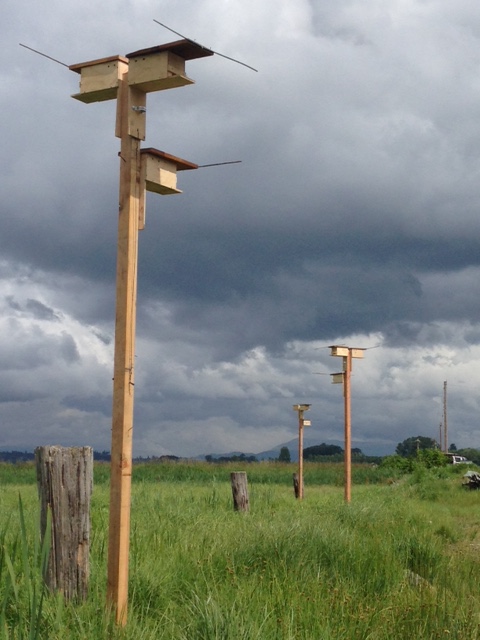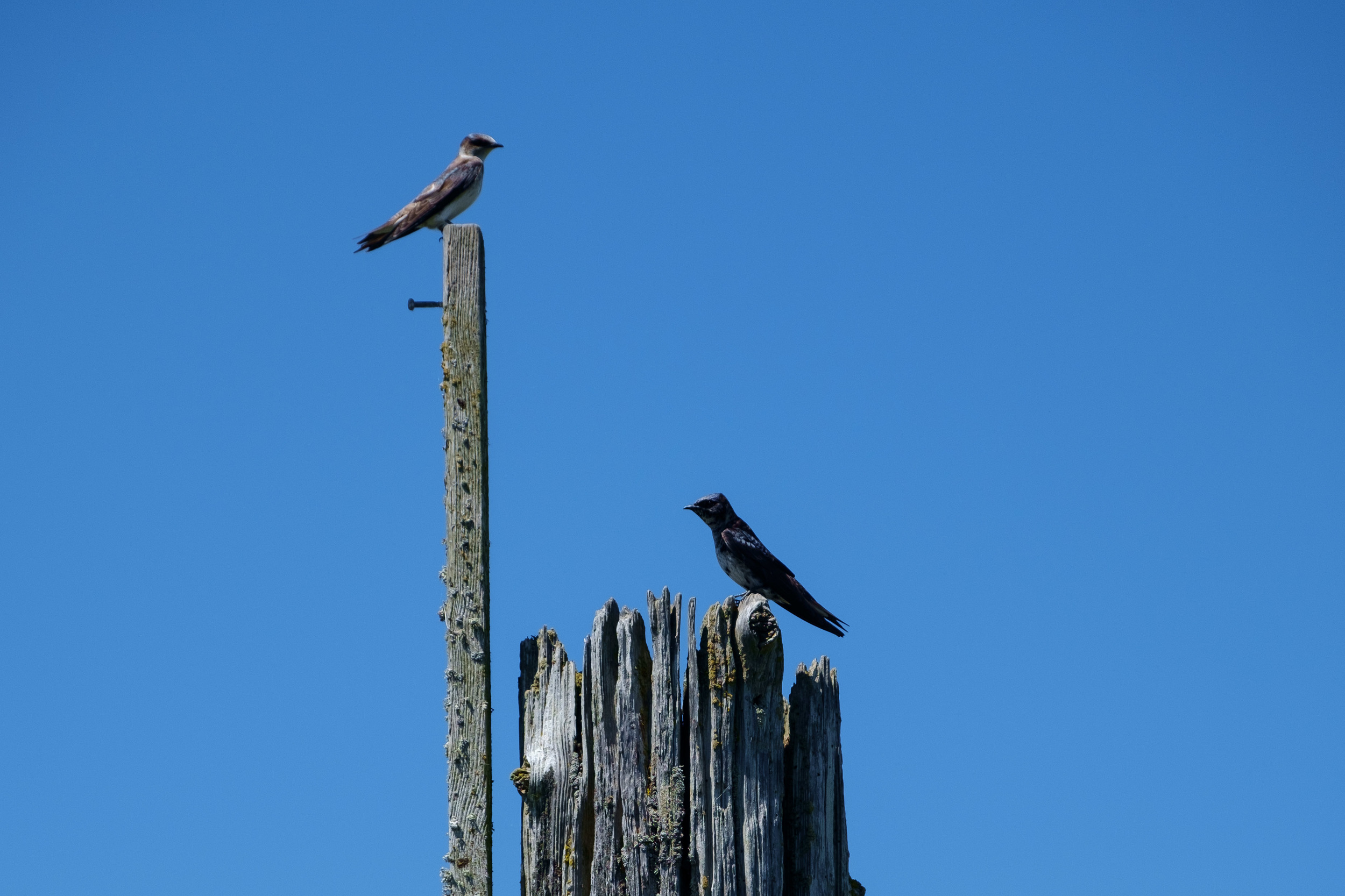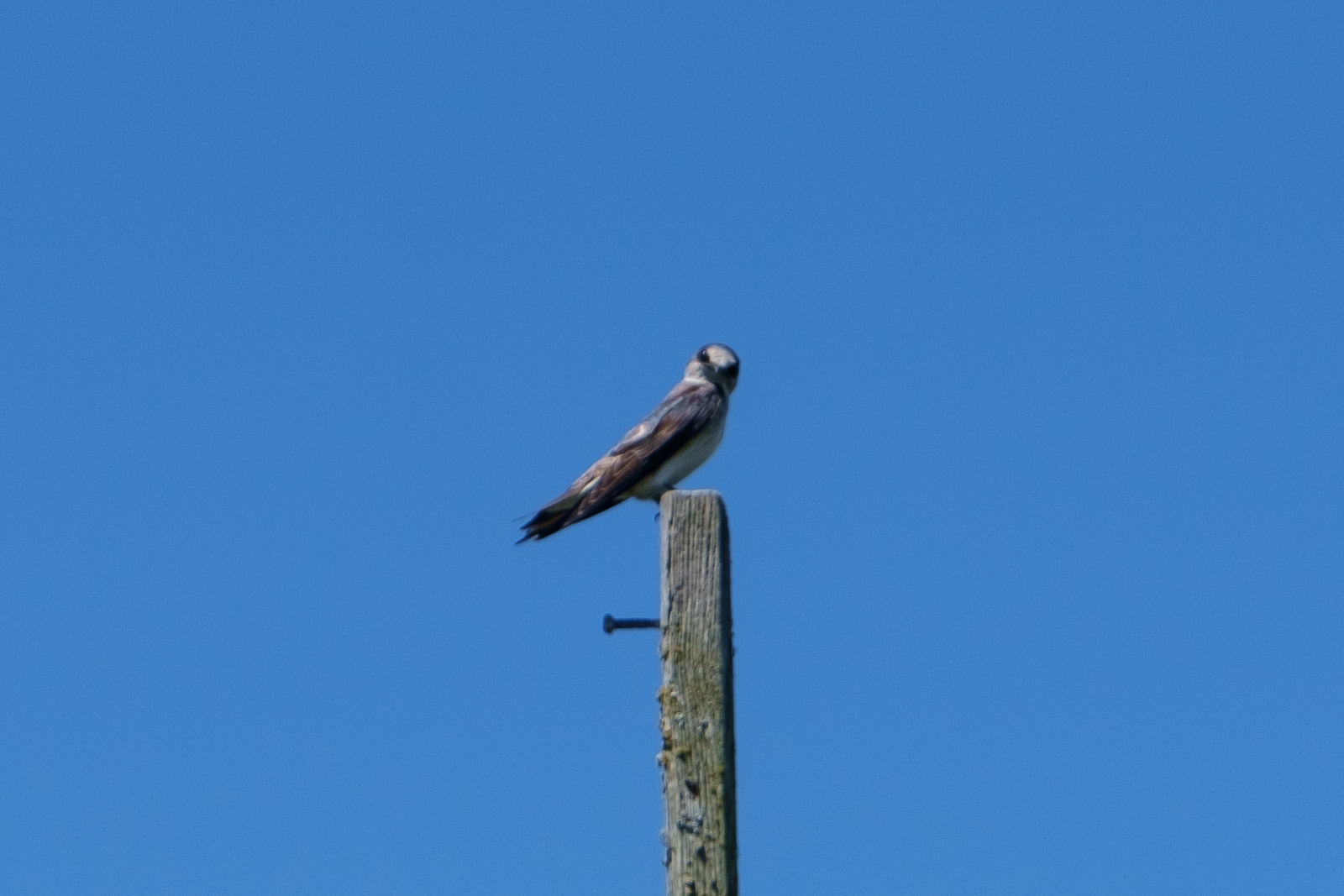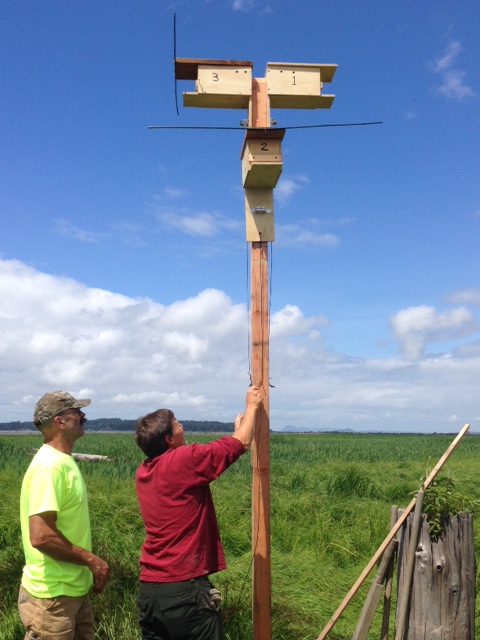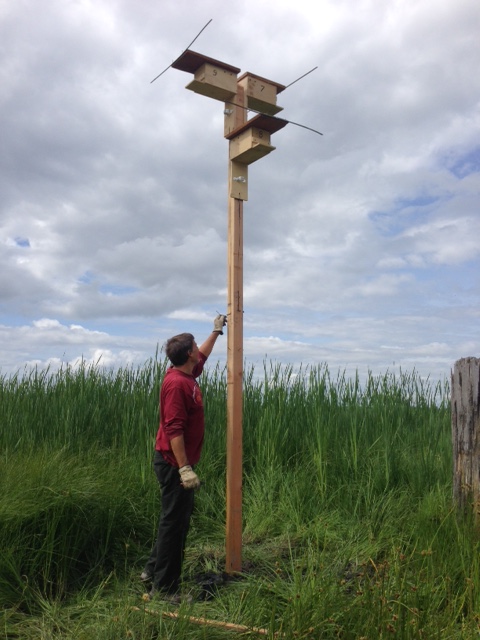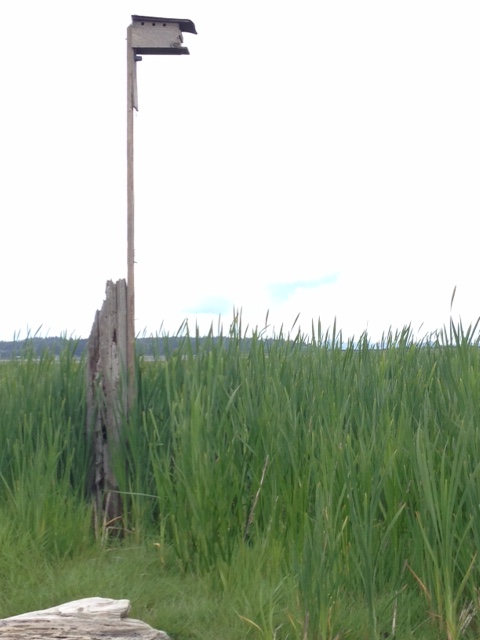Follow us on a multisensory experience to explore the birds of Washington’s sagebrush steppe.
Staff picks: Our favorite birds
Photos: Washington's Spring Bird Migration
Winter birds brighten Washington
We Spent a Day Counting as Many Birds as Possible
Discover Washington's Shrublands
Orcas and Birds: A Morning to Remember on Yellow Island
What's a diatom and why does it matter for the food chain?
What business does a forester have on the beach?
Winter Getaways
Written By Beth Geiger
Winter is here — time to warm up to some of Washington’s coolest adventures. Tromp through snowy forests, dodge salt spray as waves thunder onto a driftwood-strewn beach, and get your wild on as you watch soaring eagles and blizzards of snow geese.
Snow Nice
Snowshoe into the Central Cascades for a delightful adventure in the wintery magic of forests you’ve helped protect. The quiet blur of falling snow, the flick of a gray jay, the rich shadows of a winter afternoon. Forest Service rangers lead snowshoe hikes at Snoqualmie Pass, Stevens Pass and other locations, with snowshoes available. No experience needed, but advance reservations are required. National Park Service rangers also lead guided snowshoe hikes at Paradise on Mount Rainier.
The Mountaineers’ Meany Lodge, east of Snoqualmie Pass, is a fine, if rustic, overnight base for winter explorations. The lodge, located within the Conservancy’s 2014 purchase of 48,000 forest acres, is accessible by ski or sno-cat. In winter, the property features cross-country ski and snowshoe trails, a private downhill ski area and simple, dorm-style accommodations including group meals.
A little sunshine more your thing? Head east to the Oak Creek Wildlife Area outside Yakima, where elk share that same sensibility. Each winter, these four-legged “snowbirds” migrate from the snowy Cascade Crest to the relative warmth of the pine-scented eastern slopes. About a dozen years ago, The Conservancy purchased a 10,000-acre swath of adjacent forest and donated it to the U.S. Department of Fish and Wildlife. The addition protected migration corridors between the elk's summer and winter grounds. You can ride along on the feed truck for a close look at elk (reservations recommended, contact the refuge).
Surf’s Up
Waves lash the Pacific coast with wild fury. Gulls screech and whirl overhead. The scene is dynamic, yet somehow calming. And yes, storm watching is a thing, especially on Washington’s fabled western edge. At La Push, near Forks, dodge salt spray at First Beach or hike to the stunning wilderness coast at Second Beach. Either destination provides wind-whipped immersion into winter’s wrath.
Poseidon also dishes up plenty of excitement at Cape Disappointment State Park, further south near Ilwaco, Even better, some spray here may not be from waves, but the spout of south-bound grey whales. Thousands are spotted from here every winter in late December through January.
Washington’s coastline is a diverse gem, where commercial fishing is balanced with scenic treasures. The Conservancy works with the Quileute and Quinault Nations to recover lost crab pots, fishing gear, and other debris. With your help, we are working to preserve this coast for the future, while recovering valuable fishing equipment.
Winter’s For the Birds
Nothing shouts “Puget Sound winter” quite like the din of ten thousand snow geese. Clouds of the big white birds gather in the Skagit delta from November to March, attracting devoted flocks of birdwatchers. At the Skagit Wildlife Area near Conway, see birds along a two mile walk, or from the viewing platform at Fir Island Farms Reserve. Here, the Conservancy has helped restore the estuary, and farmers plant a buffet of winter wheat for geese.
It’s a special thrill to spot even one bald eagle in the wild, much less dozens. The majestic white head and stern pose are evocative symbols of nature’s power and beauty. Each winter hundreds of bald eagles gather along the upper Skagit River near Rockport to feast on a buffet of returning salmon. Pack a thermos of hot tea and float the river on a raft for a truly moving scenic experience, or look for eagles from several road-side points along Highway 20. Eagles and salmon are part of a fascinating ecological cycle at the heart of the Skagit River ecosystem. The Conservancy has been working here for decades, preserving critical habitat for both eagles and salmon.
The First Signs of Fall
Written & photographed by Phill Green, Yellow Island Land Steward
At last, the frantic pace of summer is over. Once again the islands return to what they are known for, ISLAND TIME. You’ll find many locals in the San Juans expressing the same thoughts and breathing huge sighs of relief. One of the first things I notice is that sailboats are actually sailing. During much of the summer I watch countless sailboats of all sizes motor up and down San Juan Channel. But something about September brings out the true sailors.
Every Labor Day weekend there is a wooden boat festival in Deer Harbor. A sailboat race around Yellow Island is one of the fun events I get to witness. The following photo is of the leaders passing Yellow this year.
September is also a month of beautiful light. From the colorful sunrises, to the midday fluffy clouds and deep blue water, to the spectacular sunsets, September can be a photographers dream.
September is also a special time for both plants and wildlife. With the return of the fall rains after a usually very dry summers, Yellow along with the other San Juan Islands starts greening up. The mosses and lichens that were bone dry all summer are taking on various hues of green while plants like licorice fern and yarrow are adding their own shades of green as they re-sprout.
In the area of the control burn done on August 28, plant life is already returning as buttercup re-sprouts and fescue starts showing new growth emerging from charred clumps.
In the above photo there is a small pile of crab shells mixed in with the buttercup. Areas of the island that are burned often have many such midden sites. But these are not native American middens; these are where mink have enjoyed a meal of fresh crab.
The bird life is in transition too. A couple of the early fall arrivals include red-necked grebes and golden-crowned sparrows. Yellow-rumped warblers that nested here are actively foraging in groups of up to eight as they “beef-up” for their migration. Savannah sparrows stop in for the month before moving on. Harlequin ducks can be seen year round but late August, early September is when their numbers start to build and they are seen on a more regular basis. The transition on Yellow is from seeing more land based birds to more marine species. Species already gone until next spring include the rufous hummingbirds and various swallow species.

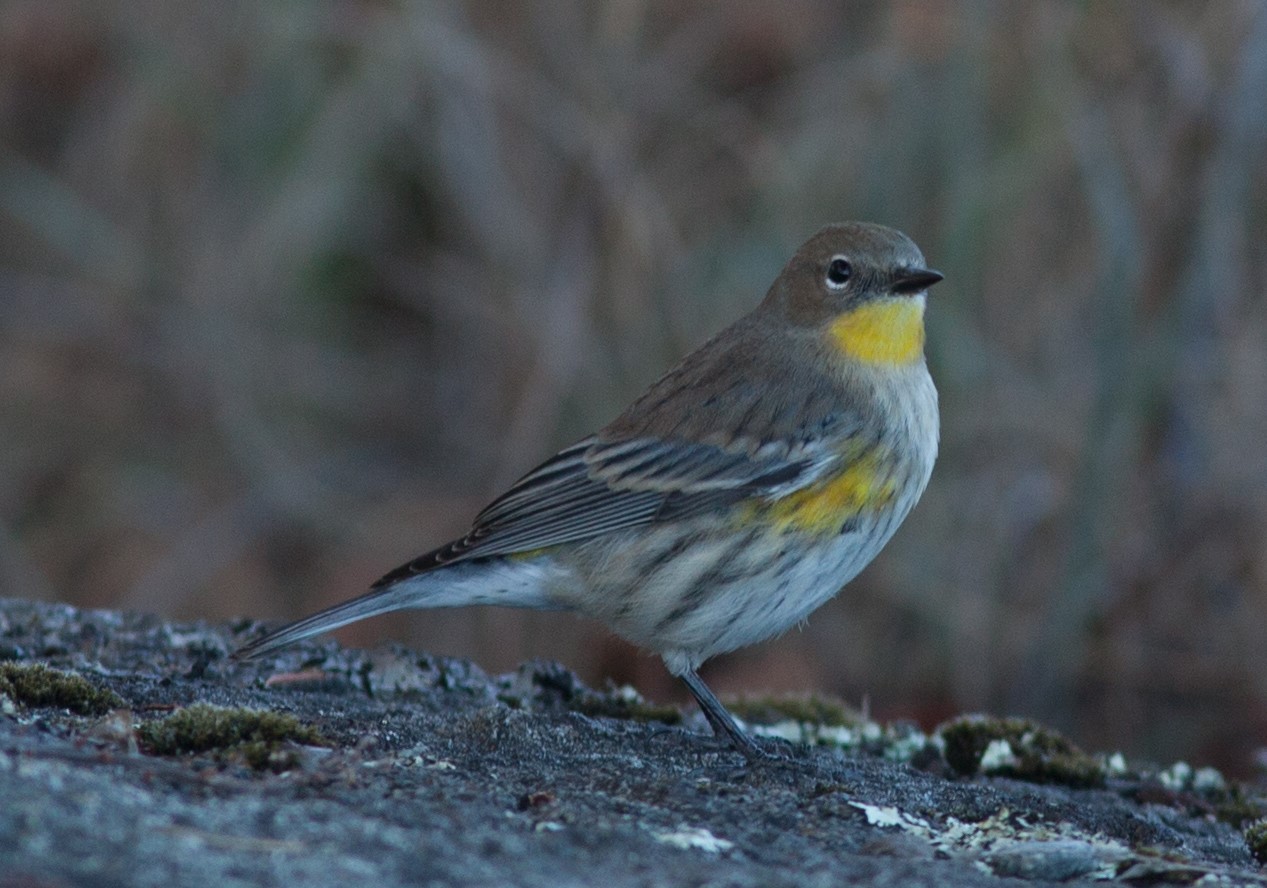
September weather has a noticeably fall feel to it; the days seems crisper, the breezes cooler, and the occasional rains makes everything seem fresher. I, for one, would enjoy September weather year round.
Ending with a question: if you don’t know the location, would you be able to tell if a photo was a sunrise or sunset?
Purple Martins: New Residents at Port Susan Bay
Written Joelene Boyd, Puget Sound Stewardship Coordinator
Photographed by Julie Morse, Senior Ecologist & Skagit Audubon Group
Thanks to dedicated volunteers we now have new residents at Port Susan Bay – Purple Martins. We are really excited by this because it is the first time (at least in recent history) that Purple Martins have been seen at Port Susan Bay (PSB) and it’s all thanks to volunteers.
In mid-February volunteers came out and installed bird houses then later in May another group of volunteers from the Skagit Audubon installed some more.
I asked Mark Perry, of Skagit Audubon, some questions about Purple Martins and this project.
Why it is important to install purple martin boxes?
Purple Martins while not endangered suffer from habitat loss along the West Coast. They are "cavity nesters"...building nests in holes. Free standing Snags along bodies of water are perfect sites. On the East Coast humans have provided nesting sites since the early colonial days and the birds have adapted, accept living in close proximity and thrive. Along the West Coast the practice of providing replacement man made housing has not been as prevalent.
Is there a specific conservation target or goal in mind?
Our conservation target is simply to expand the number of nesting sites and thereby hoping to attract more nesting pairs. Our friends to the north in British Columbia have a very successful and extensive effort. Their program has grown from just a few boxes, sites and less than 100 birds to more than 50 sites, over a thousand nesting boxes and a survey population of 4500+ birds.
Why Port Susan Bay?
In Skagit, county there are only two identified Martin nesting sites. PSB offers almost perfect natural habit...wide open marsh land near body of water but lacks tree snags. Nesting boxes were removed when the dikes were removed/relocated. By utilizing the existing left over pilings and providing 3 additional nesting poles (like a snag) we hope to attract a new population of nesting pairs and reestablish a thriving colony. Martin's eat flying insects and are very social curious birds!
Why is the Skagit Audubon focusing efforts around the region to install these boxes?
Like most volunteer projects it takes a few interested and passionate folks to see a need, figure out ways to address the need and take action. Skagit Audubon has over 200 families as members, is focused on local conservation efforts and fortunately have some handy folks willing to get involved. Please check out our website www.skagitaudubon.org for more information about our chapter.
Where else can folks see these boxes?
36 boxes are up and a thriving colony exists at Ship Harbor near the Anacortes Ferry terminal. The site is easily viewed from the Ship Harbor interpretive trail.
11 boxes are up just north of the Padilla Bay interpretative center in Bayview.
9 boxes are up in English Boom.
We hope to add 30 more boxes by next season at Wiley Slough and yet to be determined sites.
Are they just birdhouses or do they have special dimensions that make purple martin houses?
A Martin Birdhouse is a bit unique. First the orientation is more horizontal than vertical. The entrance hole must be large enough for Martins but not too large to allow starlings or house sparrows to hijack the box. The box needs to be 12-15' off the ground. And since Martin's are colony nesters you need 5-7 boxes to attract them.
If someone wanted to help out in purple martin efforts what should they do/who should they contact?
If someone is just a bit handy and would like to build boxes I can share some simple plans via email. Please see the chapter President email found on the Skagit Audubon’s website skagitaudubon.org.
If folks notice Martin's already nesting at a "natural" site please let Skagit Audubon know. Or if you think there is a potential site where we could easily access and add nesting boxes that's good info too. (Using same skagitaudubon.org email).
If you would like to join our citizen science monitoring team please contact Skagit Audubon. And of course we welcome anyone who would like to join Skagit Audubon and become active members!
Thank you Mark and all of the volunteers who helped on this project!
Open House for Birds
Video courtesy of Eleanor Beaton, Volunteer Videographer
Recently, 14 volunteers put the bird boxes and hollowed gourds up on wooden pilings around the Port Susan Bay Preserve. Teams of three or four spread out over the slick mud, wet grass and scattered driftwood. With few places at the site for songbirds to nest, the bird boxes could make a big difference. See how volunteers didn't let the rain stop them from making a difference in the video above!
















